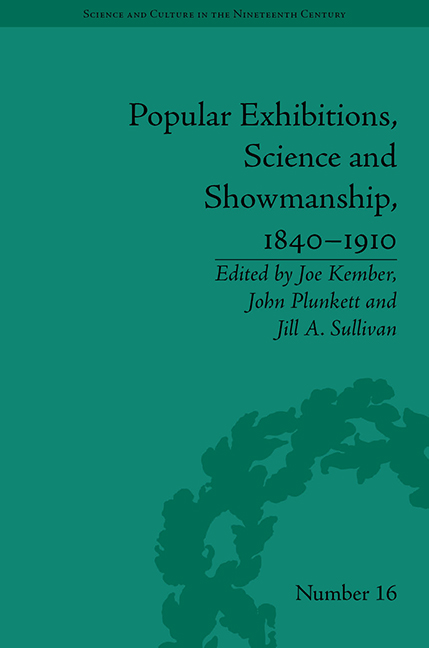Book contents
- Frontmatter
- CONTENTS
- Acknowledgements
- List of Contributors
- List of Figures and Tables
- Introduction
- Part I Science and Spectacle
- 1 Spectacle in Leicester Square: James Wyld's Great Globe, 1851–61
- 2 Fetes, Bazaars and Conversaziones: Science, Entertainment and Local Civic Elites
- 3 The Afterlife of Freak Shows
- Part II Word and Image
- Part III Staging Knowledge
- Part IV The Politics of Display
- Notes
- Index
3 - The Afterlife of Freak Shows
from Part I - Science and Spectacle
- Frontmatter
- CONTENTS
- Acknowledgements
- List of Contributors
- List of Figures and Tables
- Introduction
- Part I Science and Spectacle
- 1 Spectacle in Leicester Square: James Wyld's Great Globe, 1851–61
- 2 Fetes, Bazaars and Conversaziones: Science, Entertainment and Local Civic Elites
- 3 The Afterlife of Freak Shows
- Part II Word and Image
- Part III Staging Knowledge
- Part IV The Politics of Display
- Notes
- Index
Summary
During the spring of 1862, two years after their death, the preserved corpses of the hirsute Julia Pastrana and her infant child were exhibited to popular audiences in London at the price of one shilling. During her life Pastrana had toured extensively around Europe as the ‘Nondescript’. Popular and scientific audiences alike were drawn to her performances, which showcased not only her body covered in dark hair, but also her talent as a singer. It was the intervention of Professor Sokolov of Moscow University that enabled Pastrana's show-life to continue. Having bought the bodies of both Pastrana and her son (both had passed away shortly after the birth) from her showman and husband Theodore Lent, Sokolov tried an experimental embalming process to preserve the bodies in a lifelike manner. Unlike other preservation techniques, both corpses retained their colour and texture giving them an appearance ‘exactly like an exceedingly good portrait in wax’. Upon hearing of this success Lent regained ownership of the bodies and returned to England for the 1862 tour. In their natural appearance the corpses were deemed suitable for public consumption in much the same manner as waxworks, while their innovative preservation captured the interest of scientific audiences. In life and death Pastrana's body simultaneously served as a public curiosity and as a specimen of investigation for the learned disciplines. Such freak bodies were often borrowed to enrich medical knowledge and provide points of reference for future cases of the conditions they presented.
- Type
- Chapter
- Information
- Popular Exhibitions, Science and Showmanship, 1840–1910 , pp. 61 - 78Publisher: Pickering & ChattoFirst published in: 2014



